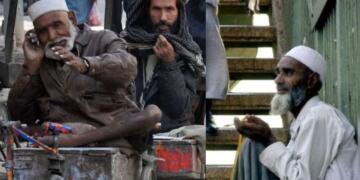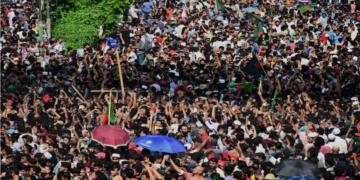‘शम नो वरुण’
This means that may the blessings of Varunadev be with us. If you’re a defence enthusiast, you cannot afford to have missed this line. The motto of our Indian Navy is synonymous with the rich naval history that our country proudly sports. Every year, the Navy Day in India is celebrated on 4th December with great pomp and fervor. But have we ever given a thought as to why was 4 December chosen as our Navy Day?
Long before we learnt the tactics of giving it back in style once again, long before the term surgical strikes even became cool, we had given the traders of terror a fitting reception for invading our nation on 3rd of December. It was 1971, when tensions between India and Pakistan were at its peak. The Bengali portion of Pakistan was striving for independence, and India, being the good old neighbor, wanted a peaceful resolution of the dispute. However, smarting from their wounds of 1965, Pakistan would have none of it.
On 3rd December, as their deadliest submarine PNS Ghazi was cruising towards her doom, Pakistan thought to take India by surprise. They attacked various Indian airfields, which included airbases like Pathankot, Gwalior, Bhuj, Agra etc and inflicted serious damages to the same. Not the one to take this lying down, Indira Gandhi perceived these attacks as an Act of War and declared that India would give a fitting response. It was in response to these air strikes that India decided to give a naval shock to Pakistan.
Unlike today, Pakistani Navy was no pushover during those times, and to even challenge them in open waters would considered as a rash act in the Indian Navy. However, the Indian Navy was resolute in their aim to give the Pakistani forces a run for their money.
Interestingly, Indira Gandhi as the Prime Minister had no intention of intervening in their plans, as she famously said to the then naval chief Admiral SM Nanda, ‘Admiral, when there is a war, there is a WAR!”
The target was the port of Karachi, which housed the headquarters of the Pakistan Navy and almost its entire fleet was based in Karachi Harbour. Since Karachi was also the hub of Pakistan’s maritime trade, a blockade would be disastrous for Pakistan’s economy. The security of Karachi Harbour was predominant to the Pakistani High Command and it was heavily defended against any air or naval strikes. The port’s airspace was secured by the strike aircraft based at airfields in the area.
As soon as Pakistan declared a national emergency on 23 November, the Indian Navy deployed three Vidyut-class missile boats in the vicinity of Okha, near Karachi, to carry out patrols. As the Pakistani fleet would also be operating in the same waters, the Indian Navy set a demarcation line which ships in their fleet would not cross. Later this deployment proved to be useful for gaining experience in the region’s waters. On 3 December, after Pakistan attacked Indian airfields along the border, the Indo-Pakistani War of 1971 officially began.
A strike group was formed quickly for the operation, and this strike group was to be based around the three Vidyut-class missile boats already deployed off the coast of Okha. However, these boats had limited operational and radar range and to overcome this difficulty, it was decided to assign support vessels to the group.
The Karachi Strike Group was formed and consisted of the three Vidyut-class missile boats: INS Nipat, INS Nirghat and INS Veer, each armed with four Soviet made SS-N-2B Styx surface-to-surface missiles with a range of 40 nautical miles (74 km; 46 mi), two Arnala-class anti-submarine corvettes: INS Kiltan and INS Katchall, and a fleet tanker, INS Poshak. The group was under the command of Commander Babru Bhan Yadav, the commanding officer of the 25th Missile Boat Squadron.
Since Pakistani aircraft did not possess night-bombing capabilities, it was planned that the attack would take place between dusk and dawn. At 10.30 pm Pakistan Standard Time (PKT), the Indian task group moved 180 nautical miles (330 km; 210 mi) from its position towards the south of Karachi. Soon Pakistani targets, identified as warships, were detected 70 nmi (130 km; 81 mi) to the northwest and northeast of the Indian warships.
The way the Indian naval ships attacked the Karachi harbor, they left Pakistan with no place to retaliate, forget even the thought of retreating.
Most of Pakistani Navy’s arsenal were reduced to being mere sitting ducks, and the Indians had a lavish spread. 3 ships were sunk, 1 ship was so badly damaged that it had to be scrapped altogether, and the fuel storage tanks at the Karachi harbor were also completely destroyed. Like the surgical strikes, the Indian side spread maximum destruction without any casualty of their own.
The Pakistan Air Force retaliated for these attacks by bombing Okha harbour, scoring direct hits on fuelling facilities for missile boats, an ammunition dump, and the missile boats’ jetty. However, it was too little and too late, since they couldn’t make any significant damages to the Indian arsenal. For this marvelous act, Commander Babru Bhan Yadav and his batch of officers were felicitated with Maha Vir Chakra, India’s second highest wartime gallantry award, and a few others were felicitated with Vir Chakra.
Now it is confirmed that a biopic depicting this bold operation shall be released at the same time when India shall be celebrating the golden jubilee of the 1971 war victory, i.e 2021. We hope that the movie pays a fitting tribute to those heroes, who had risked their all in order to keep India safe and ensure the freedom of Bangladesh from Pakistan in their own sweet way.
































